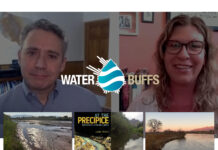State inspections lag for New Mexico’s primary drinking water source
New Mexico is behind in water inspections for the third year in a row, leaving water quality in question.
Some still don’t have a reliable water source near the headwaters of the Colorado...
Residents of a mobile home park near Gunnison are often left without water because of unreliable supplies.
Advocacy and science work together to improve water quality in Coal Creek
Two non-profit groups in Crested Butte work to clean up waters still polluted from the Keystone and Standard mines.
Two Southwest tribes raise concerns over uranium storage
In Utah, a pool of toxic waste is emitting dangerous amounts of radon to the surrounding communities, including the Ute Mountain Ute Tribe.
Heading to the lake? Colorado trying new tools, including P-Free lawns, to combat toxic...
Colorado water officials hope to combat algae blooms caused by rising temperatures and an increased use of phosphorus-laced lawn fertilizers.
Marble quarry must build bridge, culvert and improve stream for Clean Water Act violation
Colorado Stone Quarries must rehabilitate streams they illegally diverted in 2018, but some say even more needs to be done.
Water and colonialism in New Mexico – Water Buffs Podcast ep. 10 – Julia Bernal
Julia Bernal, director of the Pueblo Action Alliance, talks to Water Desk Director Mitch Tobin about the legacy of colonialism in New Mexico and its impact on water issues.
Colorado health officials investigating contaminated PFAS plume near Denver fire training center
The Colorado health department is investigating a plume causing high levels of forever chemicals in the raw water supply of Adams County.
Water and climate change in New Mexico – Water Buffs Podcast ep. 9 – Laura...
We talk to Laura Paskus, a journalist with New Mexico PBS, about her coverage of climate change and water issues in the state.
Unclear waters: How pollution, diversions and drought are squeezing the life out of the...
The Arkansas Valley Conduit promises to bring clean drinking water to more residents of southeast Colorado.












